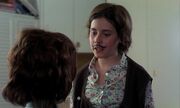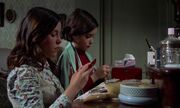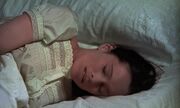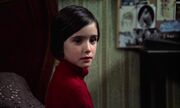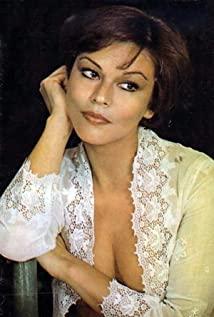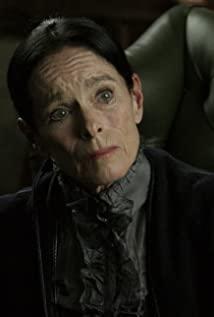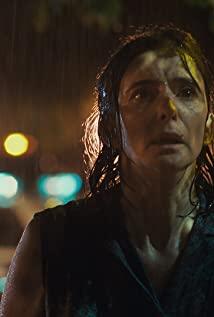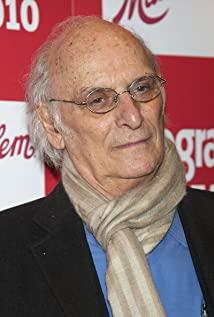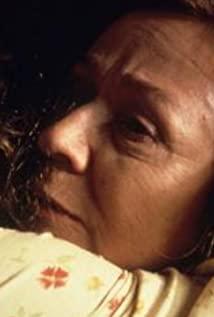http://www.criterion.com/current/posts/527 The
old days are still in the
text /
translated by PAUL JULIAN SMITH / Tang Lingjie
Carlos Saura's political and psychological masterpiece "Raising the Crow" was filmed in the summer of 1975, when the Spanish dictatorship The writer Francisco Franco lay down on the sickbed. The film premiered on January 26, 1976 at the Conde Duque Theater in Madrid, which happened to be the 40th year after the Spanish Civil War began. Saola's thinking on history and memory is just right at this important point in time. The film was caught in the middle of two decisive events for Spain: the assassination of Franco's successor Blanco in 1973 and the first democratic election in 1978.
Saura was born into a bourgeois family on the defeated side of the Civil War and received early training in the government's official film school. Before the release of "Raising Crows", he had made ten films and won a special position. He was praised by the Spanish critics as the only domestic film director with a full career. He has created a series of the most durable, independent and consistent for the Spanish national film that is full of displaced people and unable to fulfill new promises. s work. Before "Raising the Crow", Saura's film critique of Franco's regime was vague. Most of them revolve around men and violence. For example, in "The Hunt" (1965), Saura replaced the civil war with a bloody hunting squad. Therefore, it is not difficult to imagine that from the very beginning, Saura struggled with the state censorship system painfully. Even in 1973, the subsequent script of "Anna and the Wolf" (or "Anna and the Greed") was rejected. "Raising the Crow" is the first film in which Saura can exercise full artistic control. He has played the roles of story, script and director alone.
But although Saola is praised for his unique personal voice, especially his complex fusion of fantasy and reality, Saola's "author" status is largely due to the efforts of others. Saura’s long-term co-producer, Elías Querejeta, had a decisive influence on his career and prepared him to participate in international film festivals. The judges at the time were eager to award the award to a talented anti-François. Brotherhood director ("Raising the Crow" won the Ghana Jury Prize). More importantly, Geraldine Chaplin, Saura's partner and collaborator from 1967 to 1979, gave him creative and financial support. Economic stability and overseas reputation make Saola relatively immune to Franco censorship, because the latter fears that the ban on Saola’s high-profile films will have a negative impact on public reputation. Unlike some other works that oppose the subject matter, "Raising Crows" clearly criticizes the regime despite being full of mysteries, and passed the censorship without cutting.
After an early period of ambiguity with neo-realism (his first feature film, "Mourning a Gangster" in 1960, which explores the subject of problematic teenagers), Saura’s interest has shifted from society to psychology, which is what he calls "in the brain" The ghost". The previous film of "Raising Crows", "Cousin Angel" (1974) explored the inner demon of a middle-aged man, his fascination with the young girl he fell in love with during his childhood. Saura expresses this trauma by using adult actors to portray children's adventurous techniques. The clever role division is also indispensable for "Raising the Crow", but the protagonist is changed from a man to a woman trying to find relief from the shackles of the past. The Proust-style search for the dead last year is reinterpreted with a feminine tone.
The story unfolds in a huge, gloomy house that isolates the noisy life of Madrid. "Raising the Crow" tells the story of the eight-year-old Anna, played by the newcomer Ana Torrent in Victor Iris' movie "The Hive Wizard" (1973). After the painful death of Anna's mother (played by the fascinating neurotic Chaplin), Anna witnessed her father commit adultery with her married mistress and died suddenly, and her indifferent aunt Paulina came to take care of her and her two sisters. The whole family consists of women, including the silent grandma whose children are paralyzed in a wheelchair, and Rosa (experienced personality actor Florinda Chico) who has a strong personality and fills Anna’s curiosity about sex. ).
But these relatively simple premises do not reveal any experience of watching this movie. Because as the apparently prosaic narrative of "Raising the Crow" unfolds, the dead parents continue to invade the present in an unpredictable way, just like the adult Anna (also played by Chaplin) telling the past from the distant 1995 . What is disturbing is that Chaplin's own British accent voice was retained when playing the role of the mother, but when playing the grown-up daughter, it was voiced by a local Spanish actress. But going back to this point still cannot explain many of the mysteries of the film: the adult Anna confessed that she could not recall or understand her childhood experiences.
The interpenetration of reality and fantasy unfolds ingeniously at the beginning of the movie. The camera moved sideways very slowly, and a small beam of light penetrated the pale curtains. Anna walked down the long stairs in her neat white nightdress. When the camera was tightly fixed on Torrent's pale and indifferent face, a hurried adult whispered vaguely behind a closed door ("I love you," "I can't breathe anymore"). A disheveled woman fled after exchanging an anxious look with her child. Her bra was clearly visible under the open blue coat. Walking into the silent room, Anna saw his father and his naked torso on the bed. Without expression, she took the glass into the kitchen and washed it in the water tank. When she opened the refrigerator (we caught a glimpse of the mysterious chicken feet inside), her mother entered the camera from behind her and called her tenderly. We didn't know until later that her mother was dead.
Here, reality and fantasy have swapped places. The bizarre death of Anna's father, a fascist militarist, was real (later the girls were forced to kiss their father's uniformed body). On the contrary, the mother's flat appearance by the refrigerator came from the imagination of the grieving child. Through a deceptively simple shooting style (Chaplin's character walks into the picture at will), Saura shows the intimacy between the living and the dead, especially when the fragile nerves are sealed in time by trauma.
As many critics have pointed out, this kind of trauma is related to depression. The historical and social references in the film are tied to the psychological structure it explores. As a result, the private room where extramarital sexual relations took place was crowded with public and political dignitaries who came to see the bodies of their colleagues in the next set of shots. In the opening captions of the film, Anna (with deep and hollow eyes even on the beach)'s family snapshot gave way to a professional portrait of her father straddling a horse. The routine of daily life (the housekeeper Rosa combing Anna's hair or making the bed with her) unexpectedly points to bigger problems. When Anna helped clean the room with her sister Irene, Irene asked Rosa when the war ended (Rosa correctly guessed it was in 1939), and the girls next showed off the guns their father had left them ( Anna aimed the gun at the aunt she hated). Nothing more clearly and disturbingly expresses the legacy of violence from one generation to the next, from guilty and forgetful parents to unknowing children. This bad family education is also the meaning of Saola's enigmatic title. It is taken from a Spanish proverb: "The crow you raise will peck your own eyes when you grow up." It is
easy to make people claustrophobic. The house of fear itself is a clear metaphor for the regime at that time. Even in the period of "Raising the Crow", it is still frantically putting up obstacles to its life outside the bunker. Its fleece shutters look like prison bars. Rich but decadent, like the idle middle class who supports Franco. The empty swimming pool outside the house symbolizes the enjoyment of the senses. But the deathly silence of the family continued to be broken by the harsh and noisy gunfire on the streets, the dazzling merchandise posters and the depressing traffic jams. Saura seems to imply that memories, whether personal or political, may be suppressed, but just like the city cannot escape the noise, they will come back like ghosts, entwining every Spain like the characters in "Raising the Crow" people.
Influenced by his screenwriter Rafael Azcona at the time, Saura’s early films sometimes showed fearful female disgusts ("Anna and the Wolf" ended in the rape and murder of Chaplin's role). But in "Raising Crows", the inner heart used to reproduce this chaotic country is a woman. Feminist critics praise the film’s keen description of the process of women’s socialization: how girls learn to accept, oppose, or negotiate and coordinate the roles imposed on them. The daughters obeyed to comb their hair, but bluntly refused the table manners. Compared to forks and sewing needles, Xiao Anna raised the pistol more brilliantly. Her silent and rebellious expression often looked directly at the camera, a kind of implicit provocation to the audience. When the sisters played role-playing games, they cleverly reproduced the cold words of their dead parents. The young actors used the painted mustaches and borrowed lipstick to tell us that the male and female characters are nothing more than a masquerade party.
The pressure from the patriarchy is still shrouded in a room without a man, but sometimes it will dissipate, just like in the charming scene of girls dancing together. Elsewhere, the interrupted interaction between mother and daughter is expressed in a touching way. Anna fantasizes about her dead mother telling her the story of "Little Almond" tenderly, but when she woke up again sadly found herself alone. The retained memory can be either a gift or a curse.
In the historical period at that time, Spanish women still needed their husbands' permission to open bank accounts. The adult characters in "Raising the Crow" and the daughters of the dictatorship were no easier than the girls. Anna's mother gave up a promising career because of fear of failure, and eventually fell into a marriage without love. The girl's speechless grandma lost her memory and ability to speak, and could do nothing except to meditate on the photos of her married past. Anna's single aunt is unlucky in love and is tempted to have an extramarital affair with a married friend. But if the status of women was intolerable in 1975, then there may not be any improvement in 1995. The calm adult Anna spoke to the camera frequently without revealing anything. And if the actor who played her mother also played her, it was because she was destined to repeat her mother's mistakes. In the public photos of "Raising Crows," Torrent and Chaplin stand side by side, their deep eyes and translucent pale skin echoing each other. It clearly implies that the women in Saola's films are locked in the cycle of psychology and society.
In addition to the film’s concise dialogue (the characters in the film are unwilling and unable to communicate with each other), "Raising the Crow" uses photography to express these subtleties. From the first shot, Saura used a subjective lens to photograph the little girl staring at her dead father, putting us in her perspective. In the conversation between Anna and her deceased mother, Saura uses simple front and back shots, not to remind us that these shots are only fantasy, and encourage us to participate in the imaginary conversation between husband and wife. On the contrary, in those real-life scenes, the interactions between indifferent adults are often represented by distant shots, alienating us and the children from the behavior of the characters. As the children played listlessly in their secluded garden, uncomfortably looking down from the roofs of the surrounding buildings. When Anna imagined that she jumped down from this weird position, the camera was spinning frantically, reappearing the suicidal angle of her fantasy.
If, as one critic said, Saura skillfully engages the audience in the "viewing practice", he also leads us into a listening practice. In "Raising the Crow", three pieces of music are compulsively repeated: the soft classical music composed by the Catalan composer Federico Mompou played by the mother, and the traditional dance music "¡Hay, Maricruz!" ("Hay, Maricruz!" The singer Imperio Argentina is an early supporter of the Franco regime), and the popular song "Porque te vas" sung by singer Jeanette (because you are leaving), it seems to be the only record Anna has. Character costume (girl The conflict between children’s casual jeans and adults’ formal wear) reflects the conflict between tradition and modernity, which is repeated in the sound level of "Raising the Crow". But aside from its lively and brisk melody, this song expresses Anna’s rebellious teen pop song actually sang lost love and abandoned hope: for the singer, even the window under the sun has become a signal that the lover is about to leave. Reality and memory are equally sad. .
Surprisingly, these elusive film techniques and melancholic themes did not affect the box office of "Raising the Crow." This thorough art film was the sixth best-selling film that year, attracting more than one million people. Domestic audience. When left-wing critics accused Saola of focusing too much on the leisure bourgeoisie and thus ignoring the working class, Spanish audiences did not seem to think that the interpretation of the historical fable of "Raising the Crow" was a piece of cake. Difficult things. In a special period when the country is at a fork in the road, they associate the personal, even somewhat difficult-to-generalize perspective of "Raising the Crow" with their common concerns about their country.
As Saura reflects in "Raising the Crow" In 1976, the Spanish people looked back in fear and moved forward uneasy. Thirty years later, we learned that Spain’s democratic transformation, although rejected by some as a “forgotten agreement”, would be a complete However, Saurana’s prolific career has become more uneven from the beginning of "Raising the Crow". The success of dance films in the 1980s ("Blood Marriage", 1981; "Carmen", 1983), and the failure The historical epic film ("Eldorado", 1988) and the socialist realist film ("Moving to the Death Line", 1996) offset.
Although Saola's harsh filmmaking style has become obsolete in Spain, his achievements are still indisputable to this day. In 2002, Almodovar used Saura’s former inspiration goddess Geraldine Chaplin to play a nervous ballet teacher in "Say To Her". This role is similar to the neurotic pianist she performed in "Raising the Crow". Almodóvar pays tribute to the director who has been best known in the Spanish film industry for many years. "Raising the Crow" is as touching and exciting as it seemed at the time. It has not faded because of the gradual passing of the times. Instead, its value has been enhanced because of the proper discussion of the retrospective issue in the film itself.
View more about Cría Cuervos reviews



